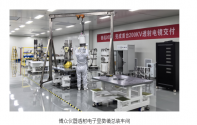Now we are talking about, this is a clear step towards a decent E-Beam lithography.
Core technology breakthrough! Domestic 200kV transmission electron microscope enters small batch trial production
In recent years, China has taken firm steps towards self-reliance in science and technology, with continuous breakthroughs in core technologies and the continuous emergence of high-end instruments and equipment. Recently, it was reported that the 200kV transmission electron microscope BZ-F200, independently developed by Suzhou Bozhong Instrument Technology Co., Ltd. (referred to as Bozhong Instrument), has entered the small batch trial production stage, marking a major breakthrough for the first domestically produced 200kV transmission electron microscope. Transmission electron microscopy is listed as one of the restricted "35 key technologies". It is an indispensable high-end scientific instrument in the fields of semiconductors, life sciences, materials science, etc. The domestic market demand is huge, but it has long relied on imports, so domestically produced Substitution is imperative.
View attachment 123356
It is understood that the BZ-F200 product can be equipped with a thermal emission electron gun or a thermal field emission (Schottky) electron gun according to user needs, which can realize EDS, STEM and other functions. In addition to 200kV, its working voltage can also be switched to 80kV, 120kV and other levels. The lens barrel of the BZ-F200 is designed with a four-stage condenser illumination system, which can switch between micron beam and nanobeam, parallel beam and convergent beam modes.
View attachment 123357
The development of transmission electron microscopes has received widespread attention and support from all walks of life. Recently, academician Duan Wenhui, member of the National Committee of the Chinese People's Political Consultative Conference, executive director of the Chinese Physical Society, professor of the Department of Physics of Tsinghua University, and Professor Chen Xi of the Department of Physics of Tsinghua University, visited Bozhong Instruments to inspect the progress of the industrialization of domestic transmission electron microscopes, and to review the significant achievements achieved by Bozhong Instruments. It spoke highly of it, fully affirmed the active participation of private enterprises in the national strategy, and put forward ardent expectations for accelerating market promotion.


